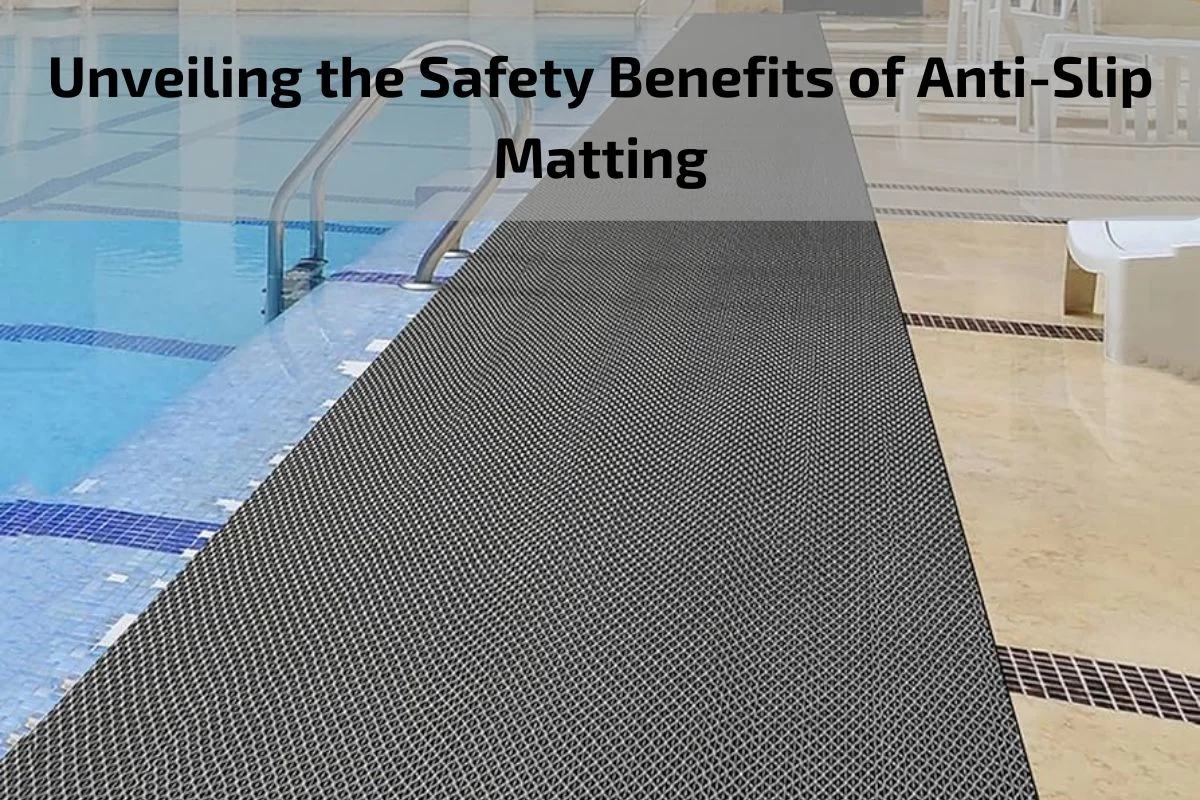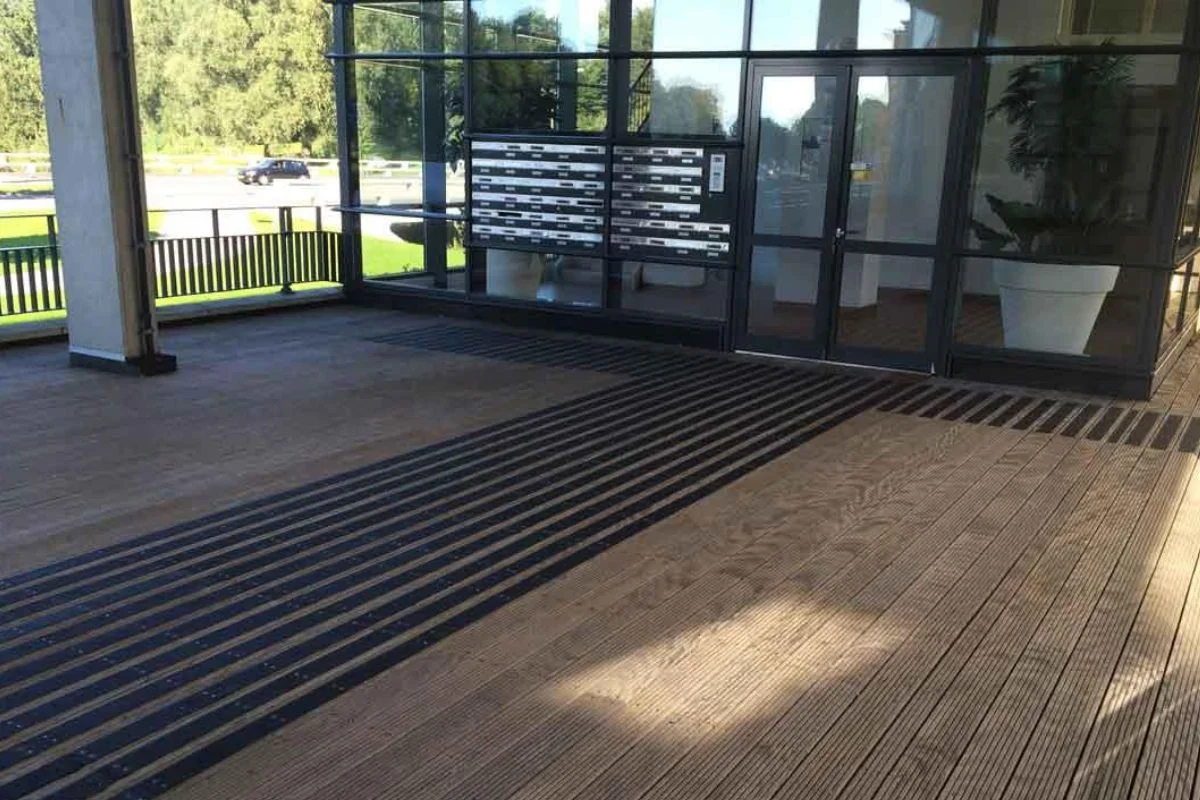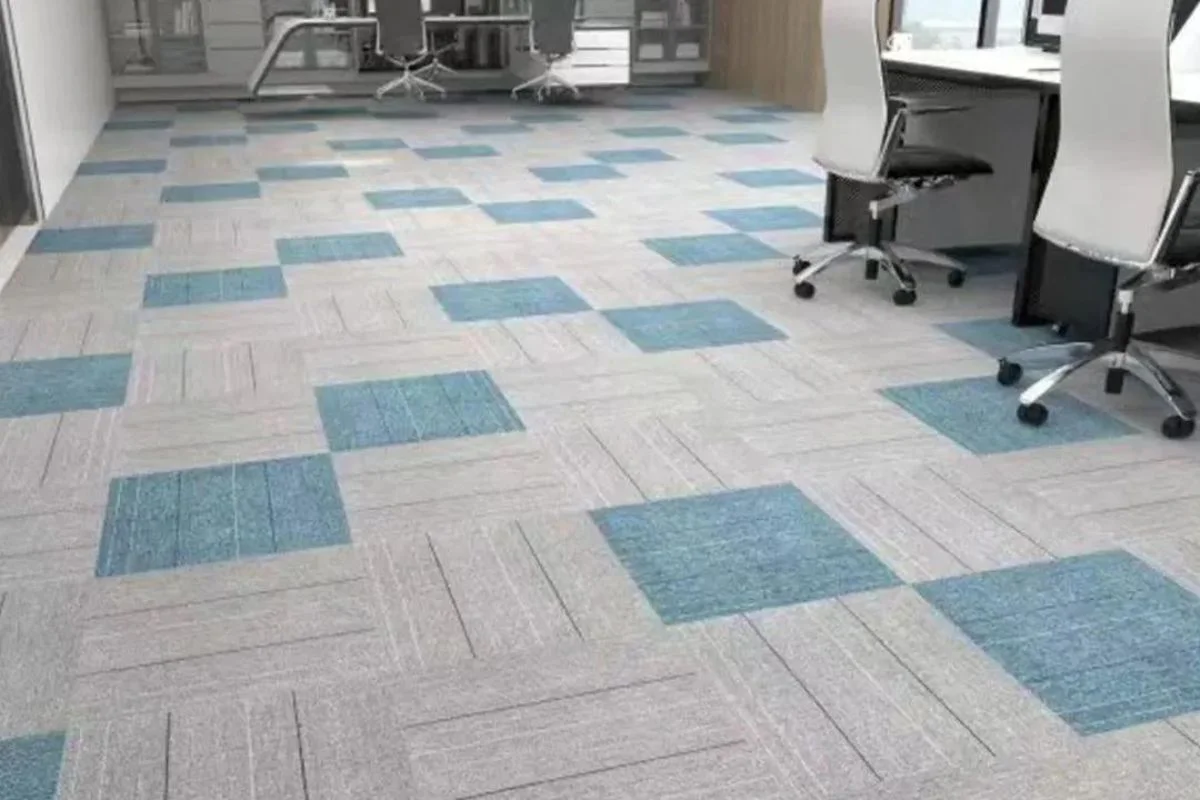Unveiling the Safety Benefits of Anti-Slip Matting
In the realm of safety measures, few aspects are as crucial as ensuring stable and secure walking surfaces, especially in areas prone to slips and falls. One such solution gaining increasing recognition for its efficacy is anti-slip matting. Often overlooked, these unassuming mats play a significant role in preventing accidents and promoting safety in various environments.
In this guide, we delve into the realm of anti-slip matting, exploring its significance, benefits, and applications across different settings. From bustling workplaces to bustling households, the importance of maintaining secure footing cannot be overstated. Join us as we unravel the safety benefits and practical advantages that anti-slip matting brings to the table, ultimately fostering secure and risk-free environments for all.
Importance of Safety in Anti-Slippery Flooring
Safety is paramount in any environment, whether it’s a workplace, commercial space, or residential area. The flooring chosen for these spaces plays a critical role in ensuring the safety and well-being of individuals who walk on it daily. Anti-slippery flooring, in particular, holds immense importance in mitigating the risk of slips, trips, and falls, which are among the leading causes of accidents and injuries.
The significance of safety in anti-slippery flooring cannot be overstated. It provides a secure footing for people of all ages and mobility levels, reducing the likelihood of accidents, particularly in areas prone to spills, moisture, or heavy foot traffic. Whether it’s a bustling office corridor, a busy restaurant kitchen, or a residential bathroom, the need for stable and slip-resistant flooring is undeniable.
Beyond preventing injuries, anti-slippery flooring instills confidence and peace of mind among occupants, knowing that they can traverse the space without fear of slipping or falling. It promotes a sense of security and trust in the environment, fostering a positive and conducive atmosphere for work, leisure, or daily activities.
Moreover, the importance of safety in anti-slippery flooring extends beyond individual well-being to encompass legal and regulatory compliance. Many industries and organizations are bound by strict safety standards and regulations that mandate the use of anti-slippery flooring in specific settings. Compliance with these standards not only helps avoid costly litigation and penalties but also demonstrates a commitment to prioritizing the safety and welfare of employees, customers, and visitors.
Definition and Characteristics Anti-Slippery Flooring
Anti-slippery flooring, also known as slip-resistant flooring, is a specialized type of flooring designed to reduce the risk of slips, trips, and falls in various environments. It is engineered to provide enhanced traction and stability underfoot, particularly in areas where moisture, spills, or high levels of foot traffic pose safety hazards.
The characteristics of anti-slippery flooring typically include:
- Textured Surface: Anti-slippery flooring often features a textured surface that enhances grip and traction, minimizing the likelihood of slipping, even when the floor is wet or contaminated.
- High Coefficient of Friction: Anti-slippery flooring materials have a high coefficient of friction, which measures the resistance to sliding between two surfaces in contact. This property helps prevent feet from sliding uncontrollably on the floor.
- Durable Construction: Anti-slippery flooring is constructed using durable materials that withstand wear and tear from heavy use and harsh environmental conditions. These materials are engineered to maintain their slip-resistant properties over time, ensuring long-lasting safety performance.
- Resistance to Moisture and Contaminants: Anti-slippery flooring is resistant to moisture, oil, grease, and other contaminants commonly found in industrial, commercial, and residential settings. This resistance helps maintain traction and prevents slips and falls, even in challenging environments.
- Compliance with Safety Standards: Anti-slippery flooring materials adhere to safety standards and regulations established by regulatory bodies and industry organizations. They undergo rigorous testing to ensure they meet specified performance criteria for slip resistance and safety.
- Versatility in Design and Application: Anti-slippery flooring comes in a variety of designs, colors, and patterns to suit different aesthetic preferences and functional requirements. It can be installed in diverse settings, including kitchens, bathrooms, commercial kitchens, industrial facilities, pool decks, and outdoor walkways.
- Easy Maintenance: Despite its slip-resistant properties, anti-slippery flooring is easy to clean and maintain. Regular cleaning routines help preserve its effectiveness and appearance, ensuring a safe and hygienic environment for occupants.
Benefits of Anti-Slippery Flooring
Anti-slippery flooring offers a multitude of benefits that contribute to safety, comfort, and peace of mind in various environments. Here are some of the key advantages:
- Enhanced Safety: The primary benefit of anti-slippery flooring is its ability to reduce the risk of slips, trips, and falls. The textured surface and high coefficient of friction provide improved traction, even in wet or slippery conditions, significantly lowering the likelihood of accidents.
- Prevention of Injuries: By minimizing the occurrence of slips and falls, anti-slippery flooring helps prevent injuries and related healthcare costs. This is particularly crucial in environments where individuals, such as children, elderly people, or individuals with mobility issues, are at a higher risk of accidents.
- Protection of Property: Anti-slippery flooring helps safeguard property by reducing the risk of spills and accidents that could damage floors, equipment, or furnishings. By preventing slips and falls, it also minimizes the potential for costly liability claims and litigation.
- Compliance with Safety Regulations: Many industries and facilities are subject to safety regulations and standards that require the implementation of anti-slippery flooring in specific areas. Compliance with these regulations not only ensures the safety of occupants but also helps businesses avoid fines, penalties, and legal liabilities.
- Improved Work Environment: In workplaces, anti-slippery flooring creates a safer and more productive environment for employees. Reduced accidents lead to fewer work-related injuries and absences, boosting morale, employee satisfaction, and overall productivity.
- Versatility and Adaptability: Anti-slippery flooring is available in a variety of materials, designs, and installation options to suit diverse environments and aesthetic preferences. It can be customized to meet specific functional requirements while complementing the overall design and decor of the space.
- Long-Term Cost Savings: While the initial investment in anti-slippery flooring may be higher compared to conventional flooring options, its long-term benefits outweigh the costs. By preventing accidents and injuries, businesses and property owners save money on healthcare expenses, insurance premiums, and potential legal fees.
- Peace of Mind: With anti-slippery flooring in place, occupants can enjoy greater peace of mind knowing that they are walking on surfaces designed for safety and stability. This confidence contributes to a positive and stress-free experience, whether at home, work, or leisure environments.
Types of Anti-Slippery Flooring Materials
Anti-slippery flooring materials come in various types, each offering unique characteristics and performance attributes suited to different environments and applications. Here are some of the most common types of anti-slippery flooring materials:
- Rubber Flooring: Rubber flooring is a popular choice for anti-slippery applications due to its natural resilience and slip-resistant properties. It offers excellent traction, durability, and shock absorption, making it ideal for high-traffic areas such as gyms, playgrounds, and industrial facilities.
- Vinyl Flooring: Vinyl flooring is another versatile option known for its affordability, durability, and slip-resistant surface. It comes in a wide range of designs, including vinyl sheets, tiles, and planks, making it suitable for various residential and commercial settings, including kitchens, bathrooms, and healthcare facilities.
- Epoxy Flooring: Epoxy flooring is a seamless and durable solution known for its chemical resistance, abrasion resistance, and slip-resistant texture. It is commonly used in industrial and commercial settings, such as warehouses, garages, and food processing facilities, where safety and durability are paramount.
- Carpet Tiles: Carpet tiles offer a softer and more comfortable alternative to hard surface flooring while still providing anti-slip properties. They feature textured surfaces and durable backing materials that enhance traction and stability, making them suitable for office spaces, retail environments, and hospitality settings.
- Safety Mats: Safety mats are specialized mats designed specifically for anti-slip purposes. They come in various materials, including rubber, vinyl, and synthetic fibers, and are often used in wet or slippery areas such as entrances, kitchens, and industrial workstations to provide added traction and safety.
- Concrete Sealers and Coatings: Concrete sealers and coatings can be applied to existing concrete surfaces to improve traction and create slip-resistant flooring. These products penetrate the concrete surface, creating a textured finish that enhances grip and reduces the risk of slips and falls in outdoor areas, driveways, and pool decks.
- Natural Stone: Certain types of natural stone, such as granite, slate, and sandstone, offer inherent slip-resistant properties due to their textured surfaces and natural irregularities. They are commonly used in outdoor environments, such as patios, walkways, and pool surrounds, where slip resistance is essential.
- Ceramic and Porcelain Tiles: Ceramic and porcelain tiles can be manufactured with textured surfaces or treated with anti-slip coatings to improve traction and prevent slips and falls. They are widely used in bathrooms, kitchens, and other areas where water and moisture are present, providing both aesthetic appeal and safety.
Installation and Maintenance Tips for Anti-Slippery Flooring
Proper installation and regular maintenance are essential for ensuring the effectiveness and longevity of anti-slippery flooring. Here are some tips to consider:
- Professional Installation: For optimal performance, it’s recommended to have anti-slippery flooring installed by qualified professionals who have experience working with the specific type of flooring material. Proper installation techniques ensure that the flooring is securely bonded and provides maximum slip resistance.
- Surface Preparation: Before installation, ensure that the subfloor is clean, dry, and free of any debris or contaminants that could compromise adhesion. Proper surface preparation helps promote a strong bond between the flooring material and the substrate, enhancing its durability and slip-resistant properties.
- Follow Manufacturer’s Guidelines: Always follow the manufacturer’s guidelines and recommendations regarding installation methods, adhesives, and maintenance procedures. Each type of anti-slippery flooring material may have specific requirements that must be adhered to for optimal performance and longevity.
- Use Suitable Cleaning Products: When cleaning anti-slippery flooring, avoid using harsh chemicals or abrasive cleaners that could damage the surface or diminish its slip-resistant properties. Instead, use mild detergents and non-abrasive cleaning tools to remove dirt, stains, and spills without compromising safety.
- Regular Maintenance Routine: Establish a regular maintenance routine to keep anti-slippery flooring clean and well-maintained. Sweep or vacuum the floor regularly to remove loose dirt and debris, and mop with a damp mop using a neutral pH cleaner to maintain its slip-resistant surface.
- Address Spills Promptly: Promptly clean up spills and stains to prevent them from becoming slip hazards. Use absorbent materials or towels to soak up liquids, and clean the affected area thoroughly to prevent residue buildup that could compromise traction.
- Inspect for Wear and Damage: Periodically inspect the anti-slippery flooring for signs of wear, damage, or deterioration. Look for areas where the surface texture may have worn down or become uneven, as these areas may require repair or replacement to maintain optimal slip resistance.
- Repair and Replace as Needed: If any areas of the flooring show signs of damage or wear, such as cracks, chips, or peeling, repair or replace them promptly to prevent further deterioration and maintain safety. Consult with a professional if extensive repairs or replacements are needed.
Conclusion
In conclusion, anti-slippery flooring stands as a vital solution for enhancing safety and reducing the risk of slips, trips, and falls in various environments. Its textured surfaces, high coefficient of friction, and durability make it a preferred choice for spaces where safety is paramount.





0 comments